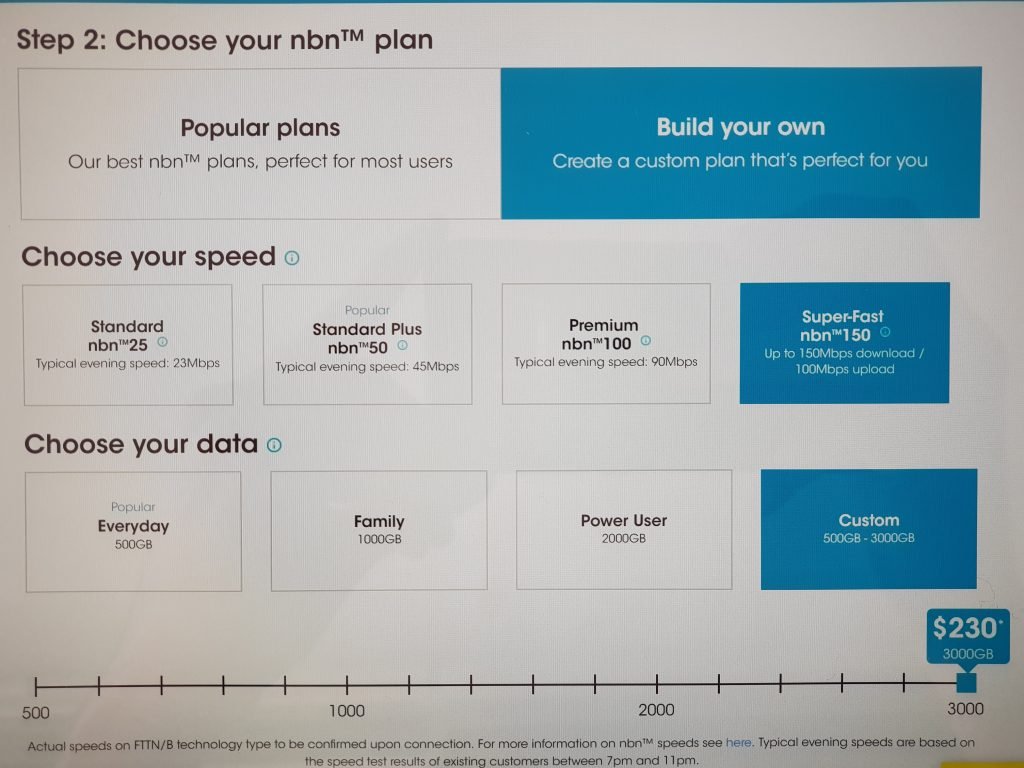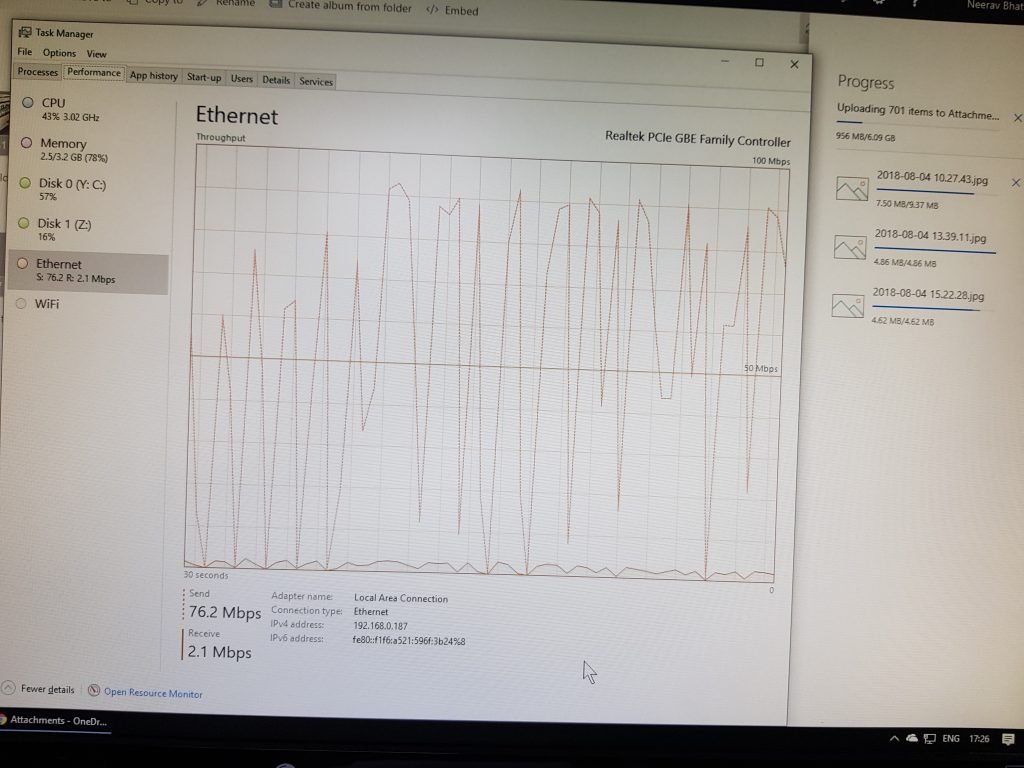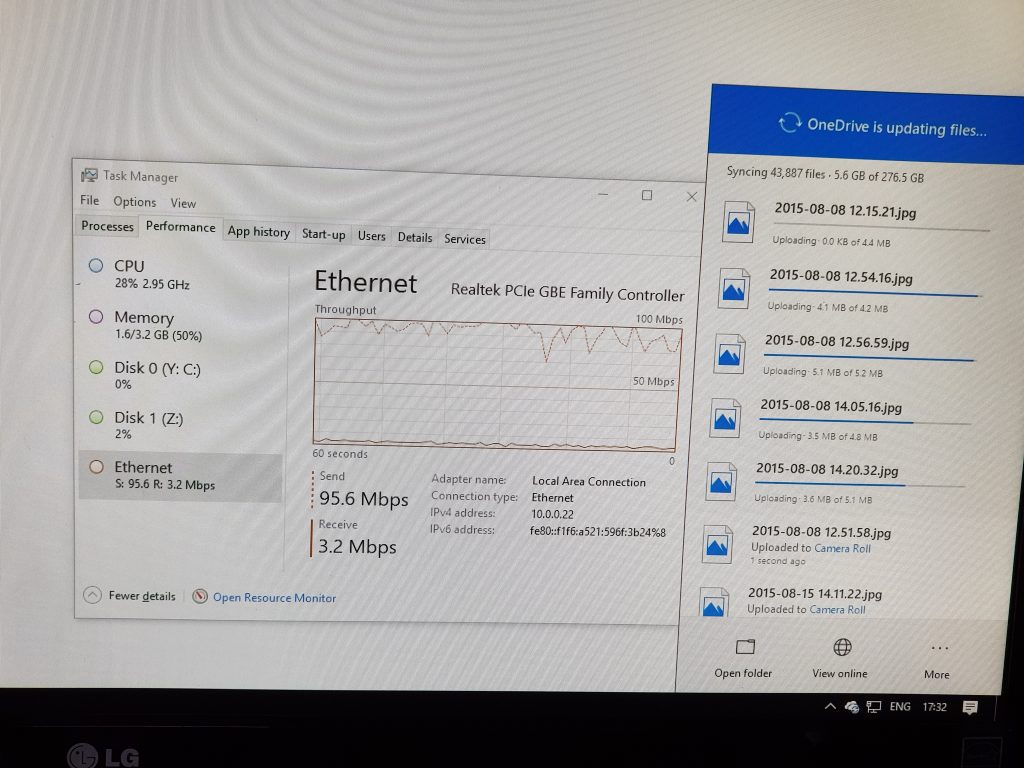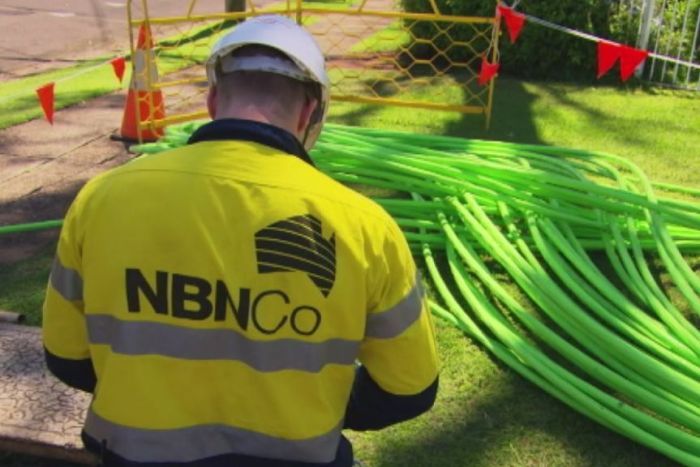If you think that the most speed available to any one premises on the NBN is 100 Mbit down 40 Mbit up, you’re mistaken.
Any Australian whose home or business is lucky enough to have been connected to the NBN with full fibre to the premises (FTTP) as the Labor Party originally planned is actually able to signup for between 1 and 4 seperate 100 Mbit down 40 Mbit up plans, even using 4 different ISP’s.
This is perfect for a small share house of up to 4 people/couples or anyone who wants to have a separate internet connection for the home business vs personal family use.
NBN actually offers wholesale speeds higher than 100 Mbit down 40 Mbit up to people with NBN FTTP but few service providers offer these and the wholesale cost is such that there hasn’t been much take-up.
Aussie Broadband (ABB) is one of the few NBN service providers that does offer faster than 100 Mbit down 40 Mbit up to FTTP customers in specific areas where there is enough demand and ABB’s network capacity can cope with these speeds.
I live in one of those areas (NBN Kensington POI) so was able to recently try out the ABB 150/100 plan. A few other areas in Australia also have the option of an even faster ABB 250/100 plan.

What’s it like to have faster than 100Mbps internet?
Once you use NBN speeds faster than 100 Mbit down 40 Mbit up you might discover technical limitations in your computer/networking hardware and workflow.
Some people use old 100 Mbit network switches and older routers that aren’t Gigabit speed capable. If you’re getting an NBN connection faster than 100 Mbit then you’ll need to upgrade all parts of your network including the router and switches to Gigabit capable models.
I live in an apartment block near the Sydney CBD so there are lots of other Wi-Fi networks around me used by neighbours and nearby businesses.
I found that using a laptop or desktop connected to my network via Ethernet cable provided much more stable speeds for large download and upload file transfers compared to Wi-Fi.
Similarly I discovered that all the web browsers I tried (Chrome, Opera and Edge) cannot handle uploading many thousands of files to cloud storage without eventually failing or just uploading much slower than the connection was capable of.

In comparison uploading to cloud storage via the apps for Onedrive, Dropbox etc was able to use the full upload/download capability of the 150 Mbit down / 100 Mbit up NBN connection.

Is it worth it, if you can get it?
It might be, and might not. Reality is there aren’t too many applications these days which will really utilise that faster speed; Netflix doesn’t need it, and it’s only a minor increase over the 100/40Mbps plans available from most NBN suppliers.
The difference is the upload speed; if you’re running a lot of backups or regularly moving things to the Internet rather than downloading, it makes a bit of sense. Uploading at 100Mbps is significantly faster than doing so at 40Mbps.
This comes at a bit of a cost, though.
If it’s available to you, remember that any NBN speed higher than 100 Mbit is not cheap because of NBN’s high wholesale costs charged to ISP’s for these speeds. The high wholesale cost also means 100 Mbit+ NBN speeds are also not available with unlimited data plans.
These plans are also restricted to certain areas; not all areas with FTTP can get the higher speeds, and not all providers offer them anyway. Thus, comparison sites like WhistleOut and Finder generally don’t list these faster speed options – you’ll need to check with individual providers if they offer them and if they’re available to you.
So even if 100 Mbit+ NBN is an option for you, it doesn’t make financial sense for residential users unless your work is paying for it or you own a business that could be a lot more efficient if you could deliver/retrieve very large files to/from customers much faster.
Hopefully a future federal government demands a lower profit from NBN so they can reduce wholesale prices for high speeds.




